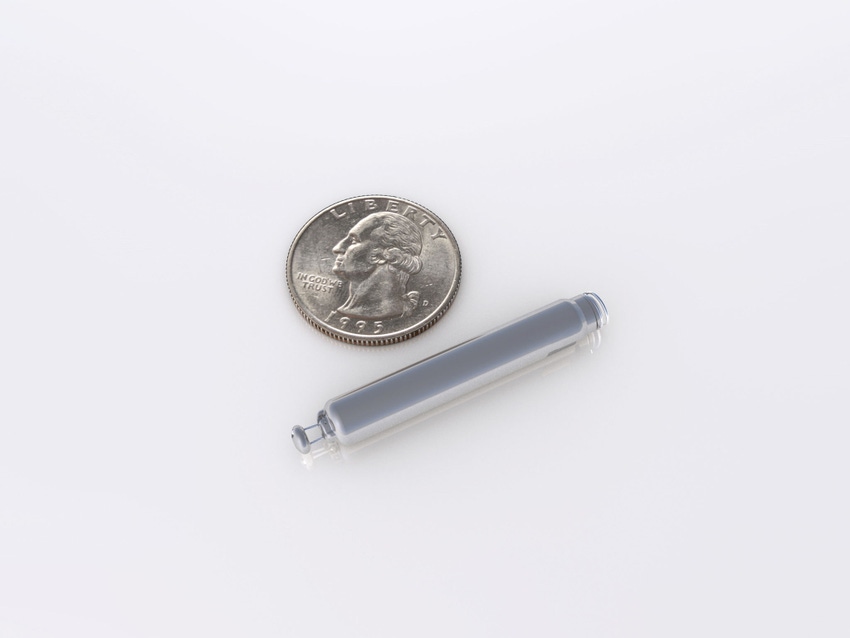Cleveland Clinic physicians have completed a study that shows leadless pacemakers might be a safer option than traditional transvenous pacemakers.
June 26, 2018

A Cleveland Clinic-led study shows that leadless pacemakers have fewer mid-term and short-term complications than traditional transvenous pacemakers. The study was recently published in Heart Rhythm.
“The issue with traditional pacemakers, which have been around in mainstream use since the 1960s, is that the greatest source of complications come from the incisional access that we need to create a pocket for the pacemaker,” Daniel Cantillon, M.D., research director for Cardiac Electrophysiology and Pacing at Cleveland Clinic and lead author of the study, told MD+DI. “If you look at the experience with traditional pacemaker complications from the 80s, 90s, and 2000s there really haven’t been any major improvements in those complication rates because we’re limited by the fact that we’re using incisional access and we’re still using wires…”
Cantillon pointed out that the leads could break, dislodge or the pocket incisions could gain infections themselves. However, a leadless pacemaker is delivered into the heart from a catheter that is introduced from a blood vessel in the leg. It doesn’t require an incision and there are no wires used.
Cleveland Clinic’s multi-center study compared short- and mid-term complications between 718 patients receiving the Nanostim leadless pacemaker and 1,436 patients with conventional (transvenous) pacemakers.
“One of the limitations of the study was that it wasn’t a prospective head-to head comparison of patients getting leadless devices vs. patients who were getting transvenous devices,” Cantillon said.
Instead, Cleveland Clinic's analysis looked at claims data from other studies and trials.
Leadless pacemaker patient data was taken from the LEADLESS II trial, a prospective, nonrandomized, multi-center clinical trial. Transvenous patient data were obtained from Truven Health MarketScan claims databases for patients implanted with single-chamber pacemakers between April 2010 and March 2014 and more than 1 year of pre-implant enrollment data. Statistical methods were used to match patients between the two groups to compare the outcomes of a leadless vs. traditional pacemaker with other key clinical variables being equal.
At one month, the study found that patients receiving one type the Nanostim Leadless pacemaker overall had fewer complications (5.8% vs. 9.4%). Leadless pacemakers completely eliminated lead and pocket complications, including infection. By comparison, complications among traditional pacemaker recipients included lead complications (3.62%), pocket complications (0.42%) and infection (1.74%).
There were no significant differences between the groups in regard to rates of vascular complications, electrode dislodgement and generator complications. However, the study did find that those receiving leadless pacemakers had an increased risk of developing pericardial effusion – bleeding between the heart and the sac that surrounds the heart (1.53% vs. 0.35% for traditional). These complications were uncommon, but serious, and sometimes required surgery.
“There are a couple of things to keep in mind about that, is that the LEADLESS II technology looked at generation one technology,” Cantillon said. “So all the operators including myself that were involved in the LEADLESS II trial were seeing all of this for the first time. We actually did an analysis where we looked at the operator specific complication rates with a new technology before and after 10 implants and we found that basically after 10 implants the complication rates for the leadless device were cut in half.”
He added, “when you have a new technology and physicians that are seeing it for the first time, operator experience made a difference in reducing complications. We hope – and we don’t know this to be true yet - that the future generations of the leadless technology that are in development, that with the combination of operator experience and new technology can drive down that difference that we saw in that one category.”
The Nanostim leadless pacemaker falls under Abbott Laboratories’ umbrella. The company picked up the device through the $25 billion merger with St. Jude Medical that closed in 2017. St. Jude Medical gained access to the leadless pacemaker when it acquired Sunnyvale, CA-based Nanostim for $123.5 million in 2013.
“Right now leadless pacemakers are here to stay,” Cantillon said. “But the major problem and the major limitation is that the current leadless pacemaker that we have available is just a single chamber ventricular-only pacemaker. That accounts for about 10% of all the U.S. population that use pacemakers. The other 90% are not served by this technology. For those patients traditional transvenous pacemakers must be used.”
He noted that this study data could help push the industry to eventually look at getting an expanded indication to reach the 90% of patients that were not using leadless pacemakers.
About the Author(s)
You May Also Like




